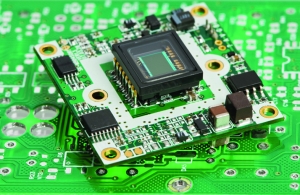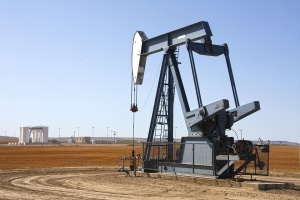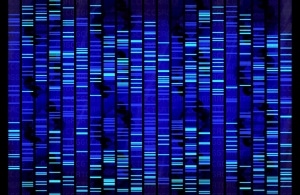Outlook for 2018: The Analytical and Life Science Instrument Industry
Strategic Directions International (SDi), a division of BioInformatics Inc., just released the SDi Global Assessment Report 2018: The Laboratory Analytical & Life Science Instrumentation Industry. In this article we discuss some of key trends we observed in 2018 and our analysis of where the industry will find opportunities for growth in 2018.
The 800+ page report details updated size, growth and market analyses for over 50 instruments in six major technology categories. In addition the projections, based on 15 editions over 20+ years of publication, are made on the industry’s prospects out to 2022 and include technology overviews, and detail market segment and regional developments. For this first time, users of the report will have an option to receive an electronic data stream updating the market projections on a quarterly basis.
Modest But Steady Growth
In 2017, demand for analytical and life science instruments and laboratory products reached just over $56 billion, a new high and an increase of 4.6% over 2016. While not as marked an improvement as 2016 was over 2015, the past year saw growth tick upwards, and also exceeded the expectation set in last year’s forecast issue, in which we predicted growth of 4.5%. Looking forward to 2018, the general economic situation remains favorable, and growth in the instrument industry is forecast at 4.6%, resulting in estimated 2018 industry revenues of $58.7 billion.
End-Market Forecast
When looking at which end-markets will fuel growth in 2018, we see attractive opportunities for instrument manufacturers in a number of broad markets.
Semiconductors

Data from the semiconductor industry group SEMI show that demand for wafer processing equipment grew an astonishing 37.5% in 2017. Although lab instrumentation is only a small portion of the semiconductor equipment industry, the overall semiconductor and electronics industry has the strongest growth prospects for 2018, with demand for instruments growing 6.5%. This should provide a boon to the markets for electron microscopes and X-Ray Fluorescence spectrometers (XRF), as well as other surface science, atomic spectroscopy and materials characterization instruments relevant to the industry.
Chemicals

Biopharmaceuticals
Biophar
Energy

The International Energy Agency forecast in December 2017 that worldwide demand for oil will increase 1.3% in 2018 to 99.1 million barrels per day (mb/d), a decline from 1.6% growth last year. Global refinery crude throughput is estimated to have increased 1.0% last year to 80.6 mb/d. Wood McKenzie forecast in December 2017 that capital spending by upstream oil companies will increase slightly in 2018 to $400 billion. However, capital spending on liquid natural gas projects will fall to $16 billion due to the completion of two major projects. Based on a December 2017 survey of energy companies, Evercore ISI found that global capital spending by energy exploration and production companies in expected to rise 7%, which would be the first increase in four years, led by the US with a 15% increase to more than $100 billion. The oil and gas industry has finally begun to turn the corner and return to growth in demand for instruments. As expected, oil and gas was slower to respond to the rise in commodities prices than the metals industry, which is further along in its recovery. Key technology segments supported by industrial markets include atomic spectroscopy techniques and GC.
Life Science Applications

Broadly speaking, life science–oriented markets in both research and applied sectors will do well in 2018. Strong performances are expected for demand from the biotechnology and food industries, hospitals and CROs (strongly associated with life science customers). Of interest, 2017 was yet another year in which instrument and lab product companies prioritized investments in diagnostics companies. The emphasis was most evident through the many acquisition announcements. PerkinElmer bought Tulip Diagnostics and EUROIMMUN upping the Diagnostics segment as a share of sales. Building on the success of its MALDI Biotyper products, Burker expanded its associated product offerings and expertise with the purchases of InVivo Biotech and MERLIN Diagnostics. In addition to acquisitions, numerous instrument companies, including Agilent, Sciex, Thermo Fisher announced important firsts for regulatory approval, reaping the results of earlier investments.
Software and Informatics

Software has advanced instrument data processing, access and analysis, as well as contributed revolutionary developments in instrument usability and application-specific workflows. The next generation of informatics and software solutions, led by AI, IoT and data integration and sharing solutions, are impacting instrument companies’ strategies and product development. In 2017, several major companies made even deeper investments in the field. Although most of these acquisitions are centered on traditional lab technology, they are a testament to the necessary integration of software and informatics capabilities with instrument data and workflows. Likewise, major investments continued in the bioinformatics space around NGS analysis, particularly for clinical applications. Advances in informatics are especially key to the further development of the analytical capability of numerous technologies, including NGS, advanced microscopy and MS.
Looking Ahead
The SDi Global Assessment Report 2018: The Laboratory Analytical & Life Science Instrumentation Industry is the most trusted “gold standard” for measuring the size and growth of the analytical and life science instrumentation industry globally. For each instrument and category, the report quantifies the regional distribution of demand; the size of the market segmented according to initial systems, aftermarket, and service; unit shipments/installations; growth rates; and demand by industry and lab function. Each section also explores the current state of the competitive playing field, including a list of the top vendors’ market shares, a vendor participation matrix, recent developments, and concludes with a short discussion that suggests where the market might be headed over the next five years from the related standpoints of technology, competition, and growth. In our next article, we’ll discuss the instrument categories that the SDi Global Assessment Report 2018 predicts will experience the greatest growth in 2018.
This article was adapted from the SDi Global Assessment Report 2018 and the 2018 Instrument Business Outlook 2018 Forecast Issue.





